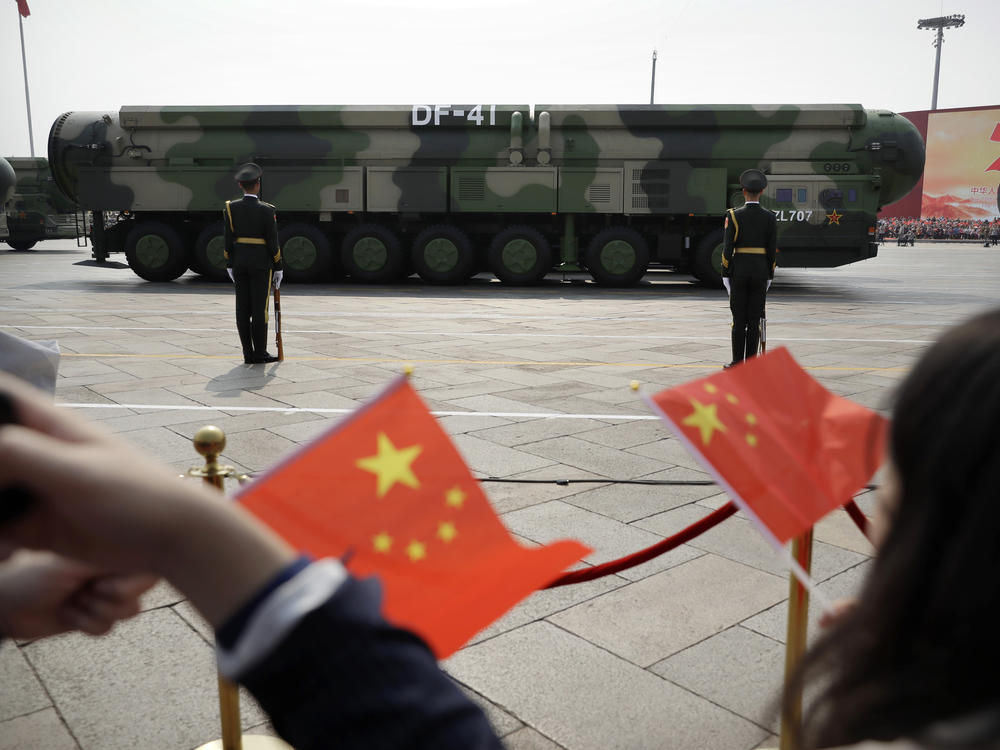Section Branding
Header Content
New Pentagon report claims China now has over 500 operational nuclear warheads
Primary Content
China may be accelerating its efforts to develop a nuclear arsenal, according to a new report from the Pentagon, as part of its ongoing efforts to modernize and revamp its fighting forces in order to match American military capabilities.
The latest assessment from the defense department said China had increased its arsenal of operational nuclear warheads from the estimated 400 in 2021 to more than 500 as of May this year.
That figure is still a fraction of the more-than 5,000 warheads the United States and the Russian Federation say they each possess in their nuclear stockpiles (of which under 1,500 warheads are ready to be launched at any time). The Pentagon estimates that China is aiming for about 1,500 total nuclear warheads in their arsenal by 2035.
"And so, that's on track to exceed some of our previous projections," said a senior defense official briefing journalists this week. The report projects that China will reach 1,000 operational nuclear warheads by 2030 and may also be developing non-nuclear warheads that could reach parts of the continental United States.
In 2020, China started intensifying its nuclear weapons program, constructing hundreds of nuclear silos across its northwestern region and speeding up its development of new warheads and launchers.
"It is a complete transformation of China's approach to nuclear weapons," says M. Taylor Fravel, a professor of political science who specializes in security studies at the Massachusetts Institute of Technology. China has since more than doubled the number of warheads in its arsenal, according to the latest Pentagon report, "confirming that the rapid modernization foreshadowed several years ago is on track," in China, says Fravel.
The Pentagon's annual report on China began in 2000, and despite current hot wars in both Ukraine and now the Middle East, the Pentagon assessment is closely watched as national security concerns on China continue to drive U.S. defense budgets and training priorities.
The report comes after a year of mounting tensions in the Taiwan Strait. China claims the island as its breakaway province and has vowed to take it one day.
Last August, following former House speaker Nancy Pelosi's high-profile visit to the island democracy, China held large-scale military exercises that encircled Taiwan's main island. Analysts said the move demonstrated how Beijing's military might blockade Taiwan and cut it off from critical energy supplies in the future.
Since the exercises, China's military, the People's Liberation Army or PLA, has also flown more regular sorties of military planes and naval vessels in the airspace and waters around Taiwan.
The Pentagon report noted that "the PLA is preparing for a contingency to unify Taiwan with the PRC by force if perceived as necessary by Beijing," using an acronym for the People's Republic of China.
"We definitely see improvements in their capabilities. Those were demonstrated in certain respects during their response to the then-Speaker Pelosi's visit to Taiwan, to President Tsai's transit of the United States," the senior defense official said, but also noted that the "PRC still perceives that they have some shortcomings that they have yet to fully address."
Copyright 2023 NPR. To see more, visit https://www.npr.org.

